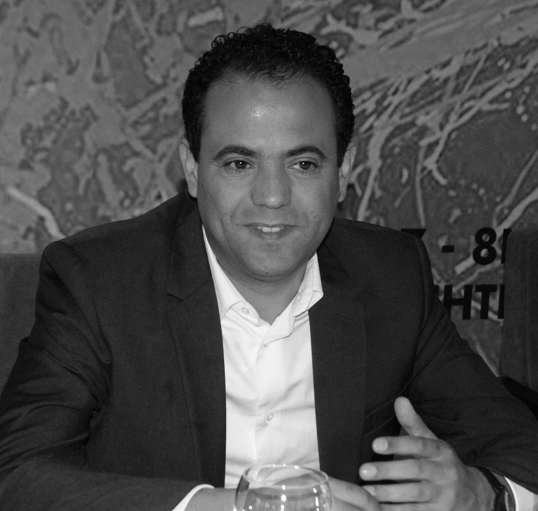
En Français
 On using robotics and artificial intelligence (AI) to combat the spread of Covid-19
On using robotics and artificial intelligence (AI) to combat the spread of Covid-19
In what ways can robotics and AI help overcome the challenges posed by Covid-19?
ANIS SAHBANI: Robotics and AI play an intermediary role between humans and specific tasks, and also provide an autonomous entity to aid in decision-making. With the outbreak of Covid-19, social-distancing measures have been implemented around the world. This principle is at odds with the intrinsic definition of societies and the mechanisms or dogmas that define them. In this particular context, robotics has emerged as a solution to social distancing. Robots can play an intermediary role, safeguarding the person from possible contamination. In Tunisia, the first deployment of robots was done in the security field, allowing security personnel to maintain order and provide confinement instructions without actually coming into contact with the populace.
We will also see robotics implemented in the Tunisian health care sector. A growing number of hospitals and nursing homes have expressed interest in using telepresence robots to provide family members the opportunity to speak with patients and the elderly via video call due to lockdowns and no-visitor policies at these facilities. In some cases, this is the only way for patients who may be at the end of their lives to see their loved ones. Additionally, robotics and AI are going to be used to carry out patient screenings at the entrance of hospitals. A chatbot will be used to ask patients questions and a thermal camera will measure their temperature, carrying out an effective Covid-19 assessment.
How far can robotics go in the fight against Covid-19 in Tunisia?
SAHBANI: The scope of the use of robotics to fight Covid-19 is very large. Robots will soon be deployed to disinfect streets and operation rooms. In Tunisia, we will be confronted by two obstacles related to deployment of this type of technology. The first obstacle has to do with the number of existing robots in the country and the possibility of converting them to fight the virus. Second, we have seen the general acceptance of this technology by the administration and the population, and the rate the deployment of technologies based on AI has multiplied by 10 since the outbreak. Our administration, traditionally reluctant to change, has made a major leap towards the use of this technology during this period of crisis.
To what extent has the adoption of robotics during the pandemic changed local perceptions?
SAHBANI: As a result of the pandemic and, in particular, the closing of the borders and the supply-chain problems incurred, decision-makers have discovered that they can rely on local skills. Many did not previously believe that we had the capacity and the capabilities to produce high-level technology locally. The release of this technology has created a sense of pride and belonging, but I also hope that it has raised questions about development strategies that will be adopted after Covid-19. It is true that some of the technologies that have been unveiled during this period are ephemeral and will disappear after this crisis is over; however, many others will remain in place and will be developed on a large scale.
What challenges has the sector traditionally faced, and what changes could the current situation bring about?
SAHBANI: As with every type of technology, robotics has faced a classical resistance due to the fact that it imposes changes to habits and traditions. This generally results in lengthy adoption processes and prolonged contract negotiations. With Covid-19, the time to reach consensus and for deployment has been considerably reduced. Decision-makers are acting with urgency and are ready to try new solutions to combat the spread. Today the door is half-open; we have to transform the trial period into proposals once this pandemic is over.
Which sectors are in urgent need of robotics and AI technologies?
SAHBANI: In Tunisia and in other countries, there are strategic choices to make: will the country be a consumer or producer of technologies? Robotics and AI have demonstrated their utility during times of crisis. Tunisia bases its development mostly on traditional industry. This sector needs to be modernised and to shift towards Industry 4.0, and robotics is the way to get there. In the security sector, we are importing robots that could be produced locally. During the Covid-19 crisis, manufacturers responded to the question “Can we produce?’’; now decision-makers are left to answer the question “Do we want to produce?’’.
Anis Sahbani, Directeur Général, Enova Robotics, sur l’usage de la robotique et de l’intelligence artificielle (IA) dans la lutte contre la propagation du Covid-19
In English
Dans quelle mesure la robotique et l’IA peuvent-elles aider à surmonter les défis posés par la propagation du Covid-19 ?
ANIS SAHBANI : La robotique et l’IA permettent en particulier de jouer le rôle d’intermédiaire entre l’humain et sa tâche, et aussi d’entité autonome de prise ou d’aide à la décision. Dans le contexte de Covid19, le principe de distanciation social a été imposé partout dans le monde. Ce principe s’oppose à la définition intrinsèque des sociétés et des mécanismes ou encore des dogmes les gérants. Dans ce contexte particulier, la robotique est apparue comme la solution à adopter pour respecter le principe de distanciation sociale. Les robots peuvent jouer le rôle d’intermédiaire permettant ainsi de préserver l’homme d’une contamination éventuelle. En Tunisie, un premier déploiement de robots a été effectué dans le domaine sécuritaire. L’agent de sécurité est ainsi préservé du contact avec la population tout en assurant le maintien de l’ordre et transmettant les consignes de confinement.
La robotique va être également déployée en Tunisie dans le domaine de la santé. Un nombre croissant d'hôpitaux et d'établissements de soins ont manifesté leur intérêt pour les robots de téléprésence, afin d'offrir aux membres de la famille la possibilité de parler aux patients par vidéoconférence en raison des verrouillages et des politiques de «non-visites» imposées à ces lieux. Dans certains de cas, cela est la seule manière pour les patients, qui pourraient être en train de vivre leurs derniers jours, de voir leurs proches. De plus, la robotique et l’IA vont être aussi utilisées pour réaliser des opérations de tris de patient à l’entrée des hôpitaux. Un chatbot questionnera le patient et une caméra thermique mesurera sa température, afin de lui attribuer un score Covid-19.
Jusqu’où pourrait aller la robotique pour aider dans la lutte contre le Covid-19 en Tunisie ?
SAHBANI : Le champ de l’utilisation de la robotique pour combattre le Covid-19 est assez large. En plus des robots mentionnés, d’autres vont bientôt être déployés pour la désinfection des rues et des blocs opératoires. En Tunisie, nous serons essentiellement confrontés à deux freins pour le déploiement de telle technologie. Le premier concerne le stock existant de robots sur le territoire et la possibilité de le convertir pour combattre le virus. Le deuxième frein est l’acceptation d’une telle technologie par l’administration et la population. Cependant, le déploiement de technologies basées sur l’IA a été multiplié par dix en Tunisie. Notre administration traditionnellement hermétique au changement a fait un grand bond vers l’utilisation de la technologique pendant cette période de crise.
Dans quelle mesure l’adoption de la robotique pourrait-elle se répandre en Tunisie après le coronavirus ?
SAHBANI : A la suite de la pandémie et, en particulier, du fait de la fermeture des frontières et des problèmes d’approvisionnements engendrés, les décideurs ont pu découvrir et surtout compter sur les compétences locales. Avant cela, plusieurs n’ont pas imaginé que nous avons la capacité et les compétences de produire localement des technologies de pointe. La sortie de ces technologies a certainement créé une sensation de fierté et d’appartenance mais j’espère aussi qu’elle a soulevé des questions sur les stratégies de développement à adopter après le Covid-19. Certes, certaines des technologies dévoilées pendant cette période sont éphémères et disparaitront une fois cette crise passée. Néanmoins, plusieurs autres perdureront et seront développées à grande échelle.
Quels sont les défis auxquels votre secteur a traditionnellement dû faire face, et quels sont les changements que pourrait entraîner cette situation ?
SAHBANI : Comme chaque nouvelle technologie, la robotique est confrontée à la résistance classique dû au changement dans les habitudes ou les traditions qu’elle impose. Ceci se traduit par un long temps d’adoption et des périodes de négociations de contrats qui peuvent s’éterniser. Avec le Covid-19, le temps d’adoption et de déploiement a été considérablement réduit. Les décideurs agissent dans l’urgence et sont prêts à tester des nouvelles solutions pour combattre la propagation. Aujourd’hui, une porte est entre-ouverte, il faut transformer l’essai après cette pandémie.
Au-delà du coronavirus, où voyez-vous le besoin le plus urgent en Tunisie pour l’adoption de la robotique et l’intelligence artificielle ?
SAHBANI : En Tunisie et dans d’autres pays, il y a un choix stratégique à faire : sommes-nous des consommateurs ou des producteurs de technologies ? La robotique et l’IA ont démontré leur utilité en temps de crise. La Tunisie base son développement essentiellement sur l’industrie traditionnelle. Ce secteur a besoin de se moderniser et de passer à l’industrie 4.0. La robotique s’avère ainsi un passage obligé. Par ailleurs, dans le secteur sécuritaire, la Tunisie importe des robots qu’elle pourrait produire localement. Pour finir, les industriels ont répondu lors de la crise du Covid-19 à la question « peut-on produire ? », il reste aux décideurs de répondre aujourd’hui à la question « veut-on produire ? ».


 On using robotics and artificial intelligence (AI) to combat the spread of Covid-19
On using robotics and artificial intelligence (AI) to combat the spread of Covid-19